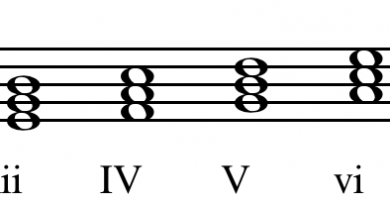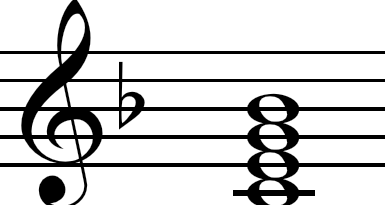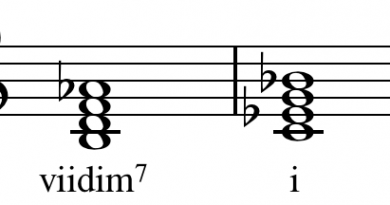How to learn music chord charts
Chord families chart
- Every melody and accompaniment bases on a chord.
- Melody generally uses the notes of a chord or notes that return to it.
- You need to know and play every chord very well to improvise.
- The fundamental drill is playing every chord and every inversion of each chord.
I suggest to study five families of chords with these follow names:
- Major seventh chord – M7, Ma7, Maj7,
- Dominant seventh – 7
- Minor seventh – min7, m7, mi7,-7
- Half-diminished – min7b5, mi7b5, m7b5, -7b5
- Diminished 7 – dim7

Learn chord charts with inversions : major, dominant
Play every chord : 12 chords X 5 families = 60 chords X 4 inversions = 240 (basic) chords
How to learn the chord families: practice them for some weeks and you will be able to memorize them. In these pages the chords are showed on the staff. For some instruments as the guitar these chords are played with different positions or inversions, but the notes are the same. Moreover, also the guitarists have to play the arpeggios of all chord inversions to learn melodic improvisation. A day you can play only major chords (12 chords with inversions another day you can study the five families of a note (for example: Fmaj7,F7,Fmi7,Fm7b5,Fdim7 with their inversions) or you can play every chord with its inversions.
For example:
1. Major seventh chord : F Maj 7
Maj 3rd + perfect 5th + maj 7th

2. Dominant 7th chord : Bb 7
Maj 3rd + perfect 5th + minor 7th

Learn other chord charts : minor, half-diminished, diminished
3. Minor 7th chord : Em7
Minor 3th + perfect 5th + minor 7th

4. Minor 7th dim 5 (half-diminished) chord : Dm7b5
Minor 3rd + diminished 5th + minor 7th

5. Diminished seventh chord : C# dim7
Minor 3rd + diminished 5th + diminished 7th

Play every inversion and improvise on a chord using just the chordal notes.
How to learn chord charts
Mastering seventh chords is fundamental to improvise. You have to acquire the technical skill to play without thinking the series of chords and inversions of every family and for every note. Being able to harp them quickly is important for monophonic instruments like bass or sax. Another exercise is playing the chordal notes in a random or symmetrical order ( broken harp ) long the full instrument’s extension.




